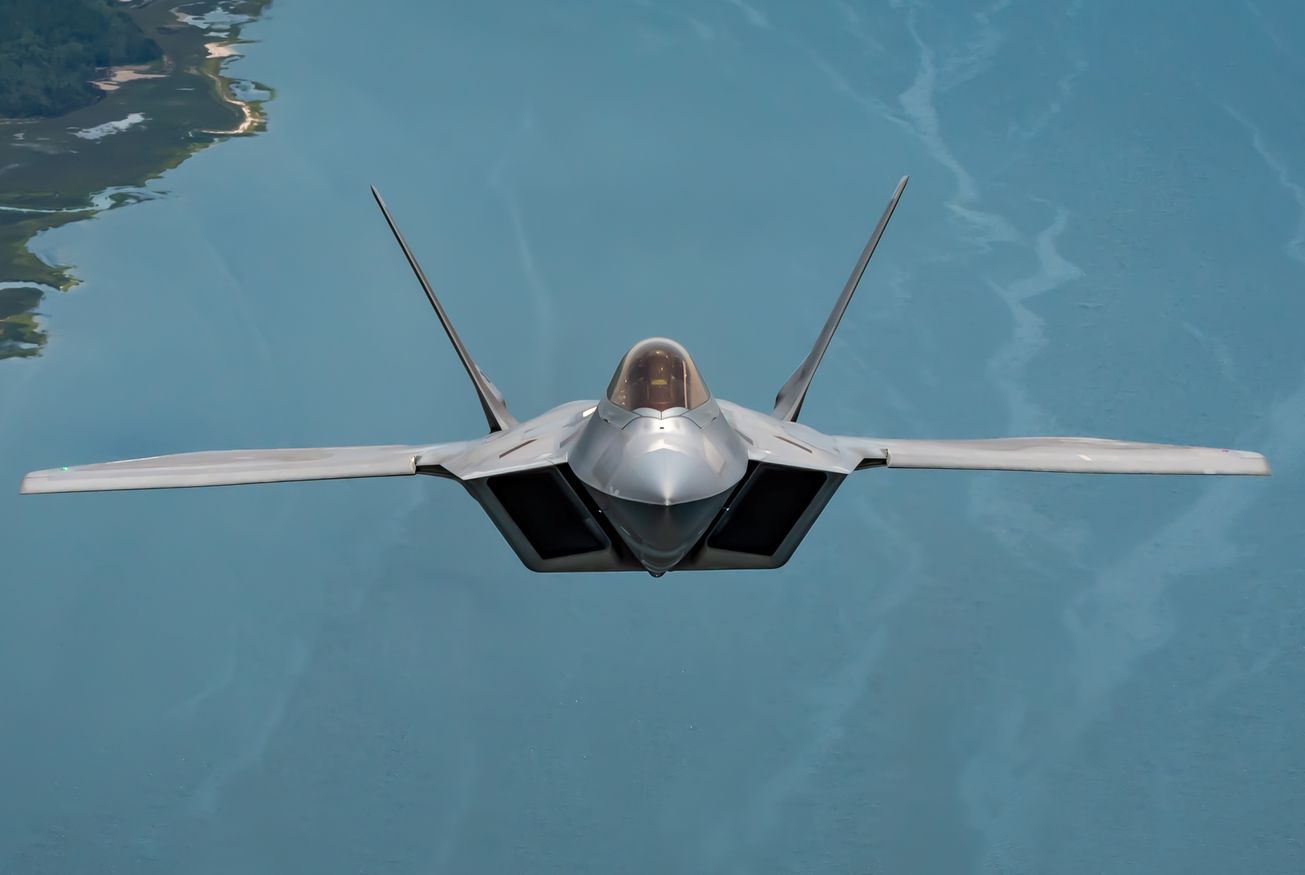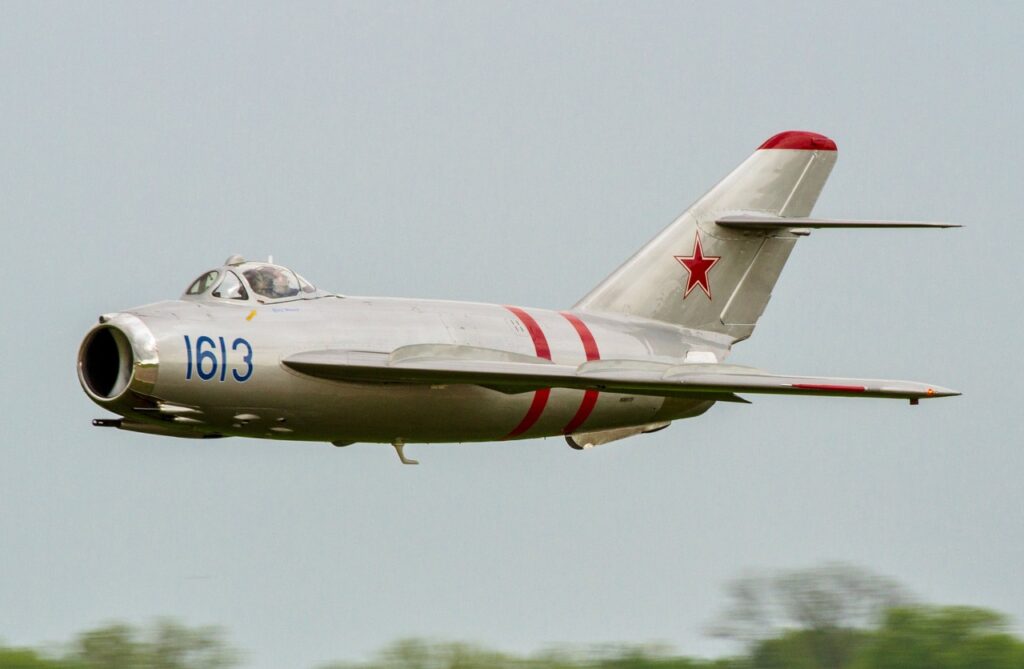
Drill, Drill, Drill: Why Is the Air Force Practicing Quickly Launching Its Best Fighter Jets?
Key point: Washington wants to make sure it can respond quickly in a crisis but also that its fighters could survive a surprise attack. Here are the preparation the Air Force is trying to get down pat.
The U.S. Air Force on Sept. 12, 2019 practiced refueling and rearming F-15E fighter-bombers at an austere location. The exercise, centered around the Royal Air Force base at Lakenheath, is part of a service-wide effort to make warplanes less vulnerable to attack.
This first appeared in 2019 and is being reposted due to reader interest.
An MC-130J transport apparently hauled equipment and ground crews. The transport met two F-15Es on the ground. Crews presumably pumped fuel from the MC-130’s tanks into the F-15s.
“The idea is to resupply an aircraft with ammunition, get it back airborne and in the fight,” Senior Master Sgt. Jason Smith from the 48th Munitions Squadron, part of the Lakenheath-based 48th Wing, told an Air Force reporter.
The Air Force in recent years has practiced forward-area refueling point, or FARP, operations with F-15Cs, F-22s, F-35s and CV-22s.
During wartime, transports such as the MC-130J could spread out across Europe or Asia, transforming remote airstrips into bases for small contingents of combat aircraft.
In separate but related efforts, the flying branch has worked out concepts for pairing small groups of fighters with heavy transport planes such as C-17s in order to create easily-distributed packages of self-supporting air power.
Dispersed units are less vulnerable to attack than are units that concentrate at a small number of large bases.
The Air Force’s Pacific units arguably are the most concentrated and could benefit the most from dispersal. On April 22, 2019 Pacific Air Forces practiced spreading out its warplanes across the region in order to make it harder for Chinese forces to target them.
Preparing for bad weather was the main official justification. But the April 2019 “dispersal exercise,” centered on Andersen Air Force Base on Guam, also was part of an evolving Pentagon plan for waging high-tech war against China.
A wide range of aircraft participated in the exercise, including F-16s from Misawa air base in Japan, F-15Cs from Kadena, C-130Js from Japan’s Yokota air base and C-17s and F-22s from Pearl Harbor in Hawaii. The aircraft quickly spread out across Micronesia.
A separate but parallel Air Force concept helps squadrons quickly to move small groups of warplanes.
In 2013, the U.S. Air Force’s Alaska-based 3rd Wing devised a new way to deploy its 40 F-22 Raptor stealth fighters in order to make the most efficient use of the limited overall number of Raptor airframes — just 120 or so of the roughly 180 F-22s in service are “combat-coded” and equipped with the latest software and weapons.
Instead of always painstakingly deploying entire 20-plane squadrons or even the whole 40-jet wing , as custom dictated , wing officers wrote new procedures for sending a quartet of F-22s plus a single supporting C-17 cargo plane practically anywhere in the Pacific region possessing a suitable airfield, all within 24 hours of the word “go.”
The 3rd Wing gave the idea its “Rapid Raptor” name and briefed the concept to the Air Force’s then-chief of staff Gen. Mark Welsh. The aim was for the 3rd Wing, during wartime, to quickly disperse its F-22s across many bases instead of concentrating them at just one facility where they might be vulnerable to, say, a Chinese ballistic-missile barrage.
Soon the whole six-squadron front-line F-22 force adopted the Rapid Raptor concept. In April 2016 the Florida-based 95th Fighter Squadron sent a pair of F-22s on a quick-fire tour of Eastern Europe as part of the U.S. military plan for deterring Russia in the aftermath of Russia’s invasion of Ukraine.
The concept caught on. In July 2017, Air Force commandos in the United Kingdom practiced deploying to an austere airfield to quickly refuel and rearm F-15s from the 48th Wing. It was the first time that Air Force special operators and their MC-130 transports had teamed up with F-15C fighters at a FARP.
You May Also Like: 5 Best Submarines of All Time, 5 Best Aircraft Carriers of All Time, 5 Best Battleships of All Time and Worst Submarine of All Time.
Air Force officials said they would to adapt the Rapid concept to other warplane types. “We’re working on ‘Rapid Next,'” Gen. Herbert Carlisle, then commander of the Air Combat Command, said in September 2015. In 2017 the Air Force folded the Rapid scheme into its “agile combat employment” doctrine.
David Axe serves as Defense Editor of the National Interest. He is the author of the graphic novels War Fix, War Is Boring and Machete Squad. This first appeared in 2019 and is being reposted due to reader interest.
Image: Reuters
Also From TNI: Iran’s Military Could Hurt the U.S. in a War
Also From TNI: History Shows Impeaching Trump Won’t Be Easy
Also From TNI: Will Trump Suffer Nixon’s Fate?
Also From TNI: Everything You Want to Know About Impeachment


